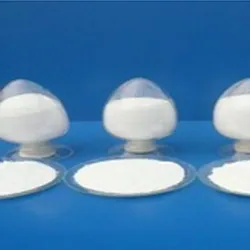
thickener e412
Understanding E412 The Role of Guar Gum as a Food Thickener
In the world of food science, thickeners play a vital role in enhancing the texture, stability, and overall appeal of various food products. Among these thickeners, E412, also known as guar gum, has gained significant attention due to its versatile properties and widespread applications in the food industry. This article delves into what E412 is, how it works, its applications, safety, and potential benefits.
What is E412 (Guar Gum)?
E412 refers to guar gum, a natural polysaccharide derived from the seeds of the guar plant (Cyamopsis tetragonoloba), which is mainly cultivated in India and Pakistan. This thickening agent consists of galactomannan, a type of carbohydrate composed of galactose and mannose sugars. Guar gum is known for its ability to absorb water and swell, forming a gel-like substance that can enhance the viscosity of food products.
How Does Guar Gum Work?
The thickening action of guar gum is primarily due to its unique molecular structure. When mixed with water, the gum particles hydrate and swell, increasing the viscosity of the liquid. This property allows it to stabilize emulsions, maintain moisture, and improve the texture of various food products. Guar gum can create a smooth mouthfeel, making it a popular choice in sauces, dressings, and dairy products.
Applications of E412 in Food Products
Guar gum is utilized in a wide array of food applications due to its multifunctional properties
1. Dairy Products Guar gum is commonly added to ice creams and yogurt to improve creaminess and prevent ice crystal formation. It enhances texture and mouthfeel while contributing to product stability.
2. Bakery Items In baked goods, E412 helps retain moisture, prolonging freshness and shelf life. It can improve dough handling and provide a soft, chewy texture in bread and pastries.
3. Sauces and Dressings Guar gum is often used in sauces, gravies, and salad dressings to enhance viscosity and prevent separation. Its stabilizing properties help maintain the desired texture over time.
thickener e412

4. Gluten-Free Products With the rise in popularity of gluten-free diets, guar gum is increasingly used as a substitute for gluten in gluten-free baking. It provides structure and improves the elasticity of dough.
5. Plant-Based Foods Guar gum is commonly used in vegan and vegetarian products to mimic the texture of meat and dairy, making it a valuable ingredient in modern food formulations.
Safety and Regulatory Status
Guar gum is classified as safe for consumption and is approved by regulatory authorities, including the FDA and the European Food Safety Authority (EFSA). It is considered a food additive with a long history of safe use. However, excessive consumption may lead to digestive discomfort, such as bloating or gas, particularly in individuals sensitive to soluble fibers.
Health Benefits and Nutritional Value
Beyond its thickening capabilities, guar gum offers some health benefits
- Dietary Fiber Guar gum is a soluble fiber, which can aid in digestion and promote intestinal health. It may help regulate blood sugar levels and lower cholesterol by slowing down the absorption of carbohydrates and fats.
- Satiety As a thickening agent, E412 can contribute to a feeling of fullness, which may assist in weight management by reducing overall calorie intake.
Conclusion
E412, or guar gum, is a powerful thickening agent that plays a crucial role in the formulation of various food products. Its ability to enhance texture, maintain stability, and prolong shelf life makes it a favorite among food manufacturers. As consumers become more aware of food ingredients and their health implications, guar gum’s natural origin and safety profile position it as a favorable option in contemporary food products. Whether you are enjoying a creamy yogurt, a deliciously thick sauce, or a gluten-free treat, it is likely that E412 is working behind the scenes to enhance your culinary experience.
-
Pure Sodium Dichloroisocyanurate Dihydrate | Powerful DisinfectantNewsAug.29,2025
-
Industrial Chemicals: Quality & Purity for Every IndustryNewsAug.28,2025
-
Nitrile Rubber Honoring Strict Production StandardsNewsAug.22,2025
-
Aspartame Ingredients Honoring Food Safety ValuesNewsAug.22,2025
-
Fertilizer for Balanced Plant NutritionNewsAug.22,2025
-
Cyanide Gold Processing with High Purity AdditivesNewsAug.22,2025
-
Formic Acid in Textile Dyeing ApplicationsNewsAug.22,2025
Hebei Tenger Chemical Technology Co., Ltd. focuses on the chemical industry and is committed to the export service of chemical raw materials.
-

view more DiethanolisopropanolamineIn the ever-growing field of chemical solutions, diethanolisopropanolamine (DEIPA) stands out as a versatile and important compound. Due to its unique chemical structure and properties, DEIPA is of interest to various industries including construction, personal care, and agriculture. -

view more TriisopropanolamineTriisopropanolamine (TIPA) alkanol amine substance, is a kind of alcohol amine compound with amino and alcohol hydroxyl, and because of its molecules contains both amino and hydroxyl. -

view more Tetramethyl Thiuram DisulfideTetramethyl thiuram disulfide, also known as TMTD, is a white to light-yellow powder with a distinct sulfur-like odor. It is soluble in organic solvents such as benzene, acetone, and ethyl acetate, making it highly versatile for use in different formulations. TMTD is known for its excellent vulcanization acceleration properties, which makes it a key ingredient in the production of rubber products. Additionally, it acts as an effective fungicide and bactericide, making it valuable in agricultural applications. Its high purity and stability ensure consistent performance, making it a preferred choice for manufacturers across various industries.





